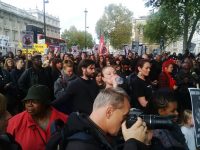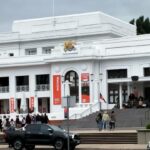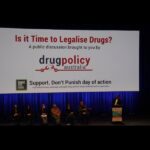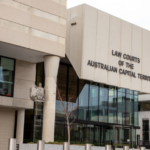Protesting and Obstructing Traffic: What Are My Rights?

Following the handing down of the controversial Abbott budget, protests have broken out around the country, with student groups featuring fairly prominently. One student group earned notoriety by trying to hijack Q&A with banners and chants the day before the budget was announced.
But one protest that few people will have forgotten, especially if they were trying to cross the Harbour Bridge on the morning in question, is the stunt that Narrabeen man Michael Fox pulled off a few years ago.
He scaled the bridge, hung off and brought traffic to a halt for over two hours as a very public protest against the ban on him contacting his ex-wife or children.
At trial he pleaded not guilty, arguing that the law allowed him to climb bridges and structures if he had a reasonable excuse.
Unfortunately for him, but perhaps unsurprisingly, the judge did not take this view. He was found guilty of climbing the bridge without a lawful reason and obstructing traffic. He was fined $3700 but managed to avoid a potential three-month jail sentence.
While his is an extreme case, clashes between police and protestors often occur, with complaints of police violence as protestors who refuse to move on are roughly handled.
Under the summary offences Act 1988, section 6, obstructing traffic is an offence. It states that: “a person shall not, without reasonable excuse (proof of which lies on the person), wilfully prevent, in any manner, the free passage of a person, vehicle or vessel in a public place.”
The maximum penalty for this offence is 4 penalty units, or $440.
Many protestors view police actions in such situations negatively and as an infringement on their right to freedom of speech or right to protest.
Some are willing to risk arrest or even stronger penalties but the best course of action is to act within the law. While the right to protest, cherished more by some than others, is not clearly defined, there is some regulation in place.
The current NSW legal procedure allows for those who participate are protected from prosecution in relation to some charges relating to obstructing traffic or people, as well as those which relate to unlawful assemblies.
The NSW police force now host on their website a form: ‘Notice of Intention to Hold a Public Assembly’ to be filled out by those organising protests or other kinds of public assemblies.
Its aim is to allow protesters to warn police in advance of any public assembly that they plan on holding. The form requires information including the route, date, time and specifying the approximate number of people.
It should be completed at least seven days prior to the protest. If this is done, the notice will exempt protesters from arrest for offences like obstructing traffic.
According to NSW law, if police believe on ‘reasonable grounds’ that you are obstructing a person, people or traffic, they may tell you to move along. This applies equally to a group of people, and police don’t have to repeat the instructions to each person in the group (however this does not lead to a presumption that everyone in the group heard the warning).
Failure to comply with such an order made by police could land you in even more trouble – if you refuse to move on, you are potentially up against a $220 fine.
Police may also ask for identification if you have been asked to move on, even if you complied with their request. This is a change to police powers, as prior to 2011, only a failure to comply with a move on direction gave the police the authority to request identification.
If you are planning on participating in a protest it would be wise to proceed with caution, and keep in mind that the police have increased powers than in the past. If you have recently been charged with obstructing traffic, it may be a good idea to speak to an experienced, specialist traffic lawyer.






